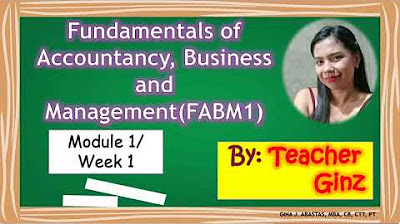A Very Basic Introduction to Logic and Syllogistic Logic
Summary
TLDRThis video script offers an elementary introduction to logic, emphasizing its importance in making informed decisions. It defines logic as the analysis and appraisal of arguments, distinguishing between 'valid' and 'sound' arguments. The script introduces syllogistic logic, explaining well-formed formulas and the star test for argument validity. The goal is to equip viewers with basic logical tools to critically assess information and form reasoned conclusions.
Takeaways
- 😀 The script emphasizes the importance of logic in winning arguments and making important life decisions.
- 📚 It introduces Harry J. Gensler's 'Introduction to Logic' as a foundational text for learning about logic.
- 🧐 Logic is defined as the analysis and appraisal of arguments, a tool rather than a fixed set of rules.
- 🔍 The script differentiates between an argument's validity and soundness, explaining that validity is about the logical structure, while soundness requires true premises.
- 📈 The concept of syllogistic logic is introduced, highlighting its structure with major and minor premises leading to a conclusion.
- 🔑 The script explains 'well-formed formulas' or 'woofs' as a method to represent arguments in syllogistic logic using letters and specific words.
- 📝 The importance of capitalization in 'woofs' is discussed, with rules for when to capitalize letters representing general terms versus specific entities.
- 🌟 The 'star test' is presented as a method to determine the validity of a syllogism by ensuring proper distribution and exclusivity of starred letters.
- 📉 The script acknowledges the complexity of the star test and suggests that practice and further reading are necessary to fully understand its application.
- 📑 The video encourages note-taking and revisiting sections for better comprehension of the information presented on logic.
- 🎓 The speaker shares personal insights on how learning basic logic has positively impacted their life, suggesting its practical value.
Q & A
What is the main purpose of the video script?
-The main purpose of the video script is to provide a basic introduction to logic, explaining what logic is, the difference between a valid and sound argument, the basics of syllogisms, and how to test for the validity of a syllogism using the star test.
Why might someone want to learn logic?
-Learning logic can help individuals analyze different arguments through logic, make important decisions in life, and come to their own conclusions by looking at various life philosophies and self-help advice more logically.
What does the author suggest as a resource for further reading on logic?
-The author suggests 'Harry J Gensler's Introduction to Logic' as a resource for further reading on the subject.
What is the definition of logic according to Gensler?
-According to Gensler, logic is defined as the analysis and appraisal of arguments.
What are the two components of an argument in the context of logic?
-The two components of an argument are a set of premises, which can be seen as supporting evidence, and a conclusion, which is based on that evidence.
What is the difference between a valid argument and a sound argument?
-A valid argument is one where it would be contradictory to have all the premises true and the conclusion false. A sound argument, on the other hand, is not only valid but also has true premises.
What is a syllogism and what are its parts?
-A syllogism is a type of logical argument that applies deductive reasoning to arrive at a conclusion based on two or more propositions that are asserted or assumed to be true. It consists of a major premise, a minor premise, and a conclusion.
What are 'well-formed formulas' or 'woofs' in the context of syllogistic logic?
-In syllogistic logic, 'well-formed formulas' or 'woofs' are formulas that follow a specific structure using the words 'all', 'no', 'some', 'is', and 'not', along with letters representing the terms in the argument.
What does the star test involve when determining the validity of a syllogism?
-The star test involves underlining distributed letters in the premises and conclusion, starring distributed premise letters and non-distributed conclusion letters, and then checking if every capital letter is starred exactly once and if there is exactly one star on the right-hand side.
Why is it important to test the validity of an argument?
-Testing the validity of an argument is important because it helps determine whether the conclusion necessarily follows from the premises, which is crucial for logical reasoning and making sound decisions.
How does the script suggest one can enhance their understanding of logic?
-The script suggests that one can enhance their understanding of logic by learning the basics, such as the difference between valid and sound arguments, the structure of syllogisms, and practicing the star test for validity, as well as seeking further reading in books like Gensler's 'Introduction to Logic'.
Outlines

Dieser Bereich ist nur für Premium-Benutzer verfügbar. Bitte führen Sie ein Upgrade durch, um auf diesen Abschnitt zuzugreifen.
Upgrade durchführenMindmap

Dieser Bereich ist nur für Premium-Benutzer verfügbar. Bitte führen Sie ein Upgrade durch, um auf diesen Abschnitt zuzugreifen.
Upgrade durchführenKeywords

Dieser Bereich ist nur für Premium-Benutzer verfügbar. Bitte führen Sie ein Upgrade durch, um auf diesen Abschnitt zuzugreifen.
Upgrade durchführenHighlights

Dieser Bereich ist nur für Premium-Benutzer verfügbar. Bitte führen Sie ein Upgrade durch, um auf diesen Abschnitt zuzugreifen.
Upgrade durchführenTranscripts

Dieser Bereich ist nur für Premium-Benutzer verfügbar. Bitte führen Sie ein Upgrade durch, um auf diesen Abschnitt zuzugreifen.
Upgrade durchführenWeitere ähnliche Videos ansehen

FABM1 Week 1 Grade 11 Definition, Nature, History and Users of Accounting information

Intoduction to Record Keeping | Accounting and Financial Management (ACCT101)

Analisa Teknikal BBNI BMRI BBRI BBCA BBTN BDMN ARTO BTPS BNGA BRIS

Share Market का सम्पूर्ण ज्ञान | Nifty | Share Market | Dr Vivek Bindra

Basic Horticulture Terminology

An Overview of Logic
5.0 / 5 (0 votes)
